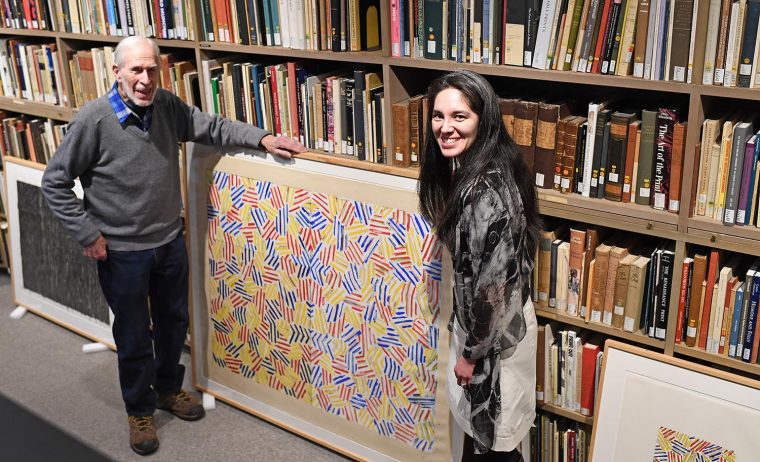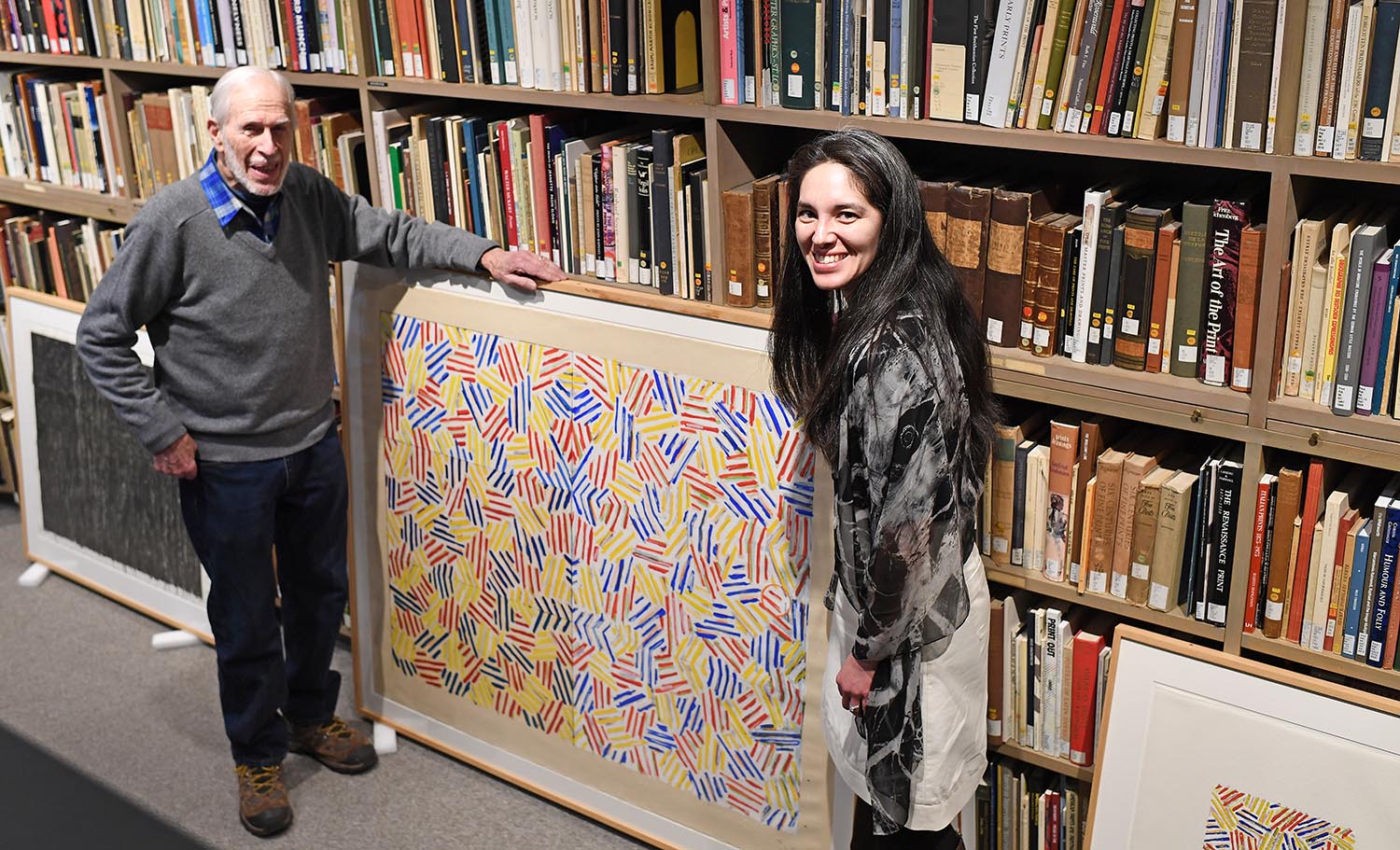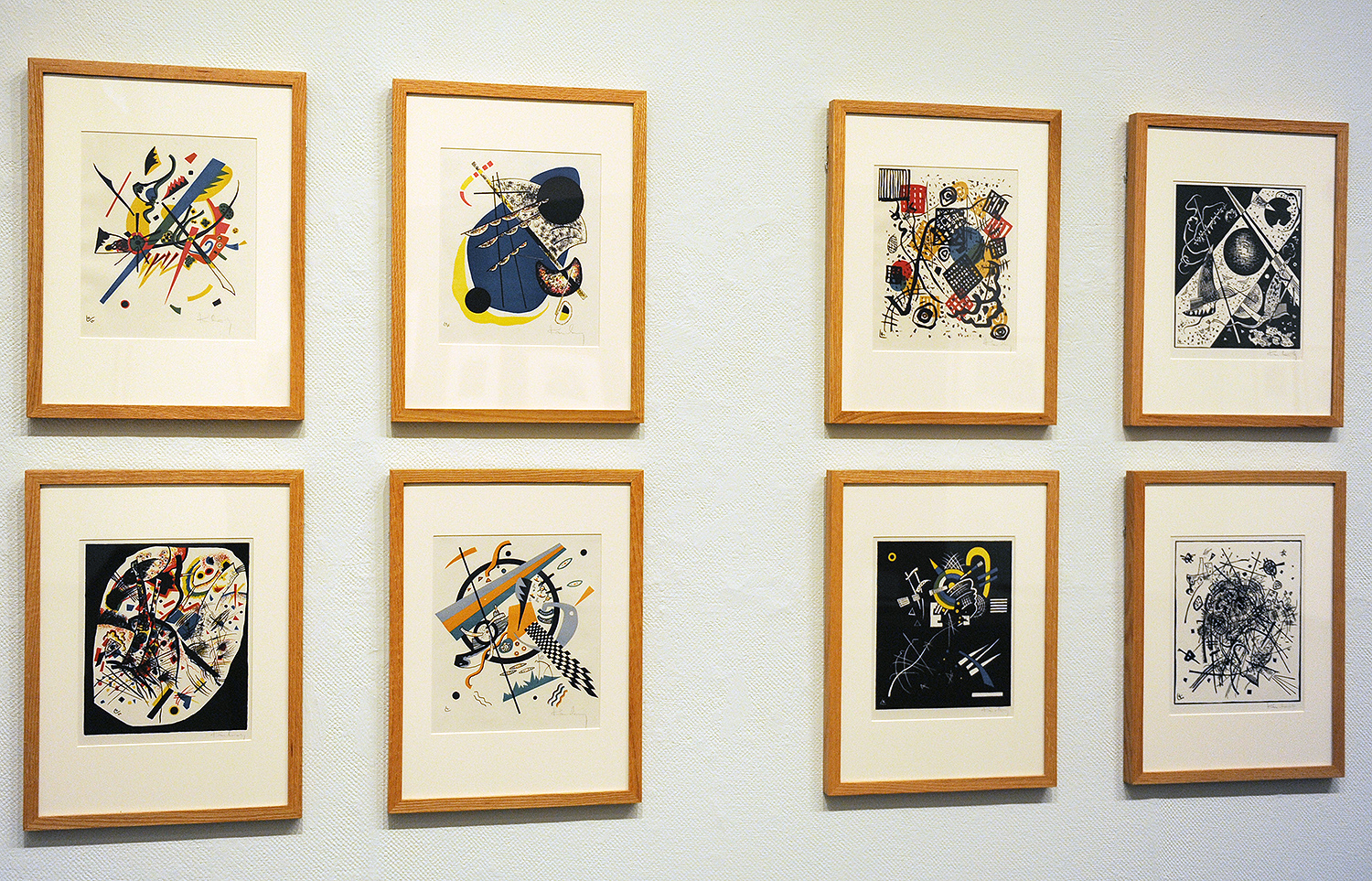Davison Art Collection to Move to Olin Library

When moving more than 25,000 pieces of fine art, even a trip of a single mile can be a huge challenge.
That’s the journey the Davison Art Center (DAC) Collection will begin in March to its new home in Olin Library. The move will be ongoing through the end of the summer, at least. Between planning and the rise of COVID, the DAC collection has been closed to the public for almost three years and Miya Tokumitsu, Davison Art Center curator, and Andrew White, Caleb T. Winchester University Librarian, are excited for the collection to take its place at the heart of the Wesleyan campus.
During that time, Tokumitsu and the DAC team inventoried the collection, readied the new DAC spaces in Olin, and have begun staging them in the DAC in preparation for the move, examining every item in the collection. These undertakings have involved the entire DAC staff, including temporary staff members at the DAC, as well as collaboration with Wesleyan’s Facilities department and library colleagues. In the coming months, the DAC artworks will be placed on trucks by movers specially trained to handle fine art. Items will go directly into storage at Olin.
“It’s important to be very meticulous across all of these processes so that things don’t go astray physically, and also so that our records don’t get mixed up,” Tokumitsu said.

The DAC collection is comprised of prints and other media from the 15th century through the modern day. Many of the items in the collection are small, but the DAC does hold three-dimensional objects, some paintings, and several large framed artworks, which create their own difficulties during the moving process.
“It’s a 3D puzzle,” Tokumitsu said. “Getting it around a corner can take several people having to stop what they’re doing and put their heads together and figure it out.”
This will be the collection’s third move in its history. Its original home was on the third floor of Olin. The Davison Art Center opened in 1952 in a modern addition to the historic Alsop House, built between 1838 and 1840, but over time the collection outgrew the current facility. “The new location has improved curatorial and security standards and better environmental controls. I know that there is some lamentation over the move, but this space actually serves the needs of the collection,” White said.
The move to Olin will not only offer better facilities to care for and display the objects, it will likely give more people the opportunity to view them in the first place. Olin receives about 250,000 visits per year. Because of that level of foot traffic, Tokumitsu and White believe that the collection will now be a central part of the Wesleyan experience rather than something that has to be sought out.
White also believes that having the art collection at Olin gives his team the chance to expand the notion of what a library can offer. In the 19th century, the idea that historical fine art would be housed alongside books was a common one, White said. Over time, that model for libraries became less common. Adding art to the library’s archeology, anthropology, biology, and natural history collections brings Olin full circle.

“The library itself is no longer just concerned with something that takes the form of a book or is on paper, or a digital version of that,” White said. “We really have an opportunity to work with students and faculty to present a whole host of objects that will inform learning and scholarship.”
Tokumitsu and White hope to have the study rooms open in the 2022-23 academic year, making the collection readily available to the Wesleyan community and the public. “I always emphasize to students that they don’t need to have an assignment or a research project to view art in the study room. If you just want to come and look at 19th century etchings, you can do that. I love to get those e-mails,” she said.
Until the day the collection is back in its full glory, Tokumitsu points arts aficionados the DAC’s robust online collection. Over 6,000 high-resolution images are on the DAC’s publicly accessible online database, and freely downloadable. “It affords a completely new way of engaging with the collection,” Tokomitsu said.
More information about Olin Library and the Davison Art Center is available online.

